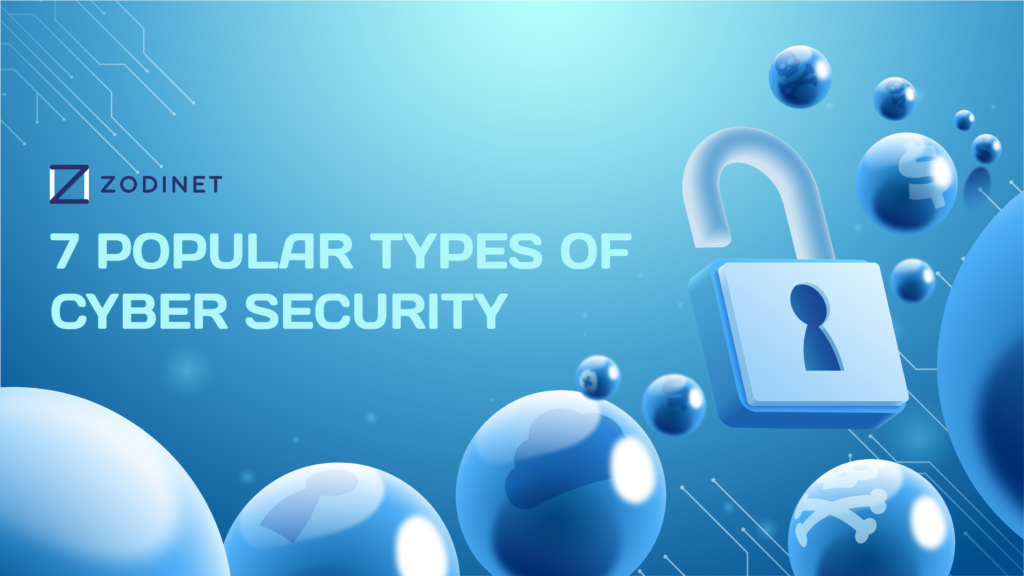
In the context of the rapid development of the internet as well as the strong digital transformation process, organizations are increasingly focusing on protecting their information security and digital activities. One of them is data security in the internet environment – a very important issue that is currently being paid attention to.
What is Cyber Security?
Cyber Security is often defined under the term Network Security, or also known as Information Technology Security – has become a top priority not only of technology product design company but of all professions worldwide.
Network security is a system that includes activities to protect electronic devices, electronic data, and the internet network from dangerous cyber attacks that cause many damages to organizations such as changing and controlling organizational information, disrupting business processes or more seriously, fraud, stealing sensitive personal information…
The explosion and strong development of the digital age have made these network attacks increasingly complex and sophisticated, so businesses and organizations today pay great attention to improving information technology security. Therefore, Cyber Security forms are constantly developing and changing to prevent and support the prevention of unauthorized network intrusion risks.
Popular types of Cyber Security
With the increase of network threats, understanding the current network security measures to keep data and information safe for organizations is an important task that cannot be ignored. Below are the seven most popular types of network security:
1. Firewall
Firewall is a familiar term in the computer network industry. This form is understood as a barrier that helps control information flows, thereby detecting and classifying allowed or disallowed accesses.
Depending on the usage needs, the firewall system is divided into 2 types: Personal Firewall and Network Firewall. In which, Personal Firewall is used to protect only one device, while Network Firewall is configured to protect the entire system.
Firewalls can be deployed as hardware or software. However, each type of firewall has different advantages and disadvantages suitable for specific usage purposes. For example, hardware firewalls have the ability to process large data volumes and provide better security, while software firewalls can be installed and managed more easily.

2. Antivirus software
Another familiar network security method is using antivirus software. They are programs designed to detect, alert, and prevent harmful software from infiltrating users’ computers by scanning files and folders on your computer to find known viruses and other malware, while removing any threats. This method has become so common and essential that installing antivirus software is one of the top priorities when installing a computer system.
Some of the most widely used antivirus software: Kaspersky, TotalAV, Panda, McAfee, Bitdefender…
3. Virtual private network (VPN)
Nowadays, remote access work is becoming more and more popular, making virtual private network (VPN) systems highly developed. This is a network system used to connect computers to each other through the Internet, creating an encrypted transmission channel in a separate virtual network space to ensure the privacy and security of data. This form helps prevent the private data of organizations from being leaked or stolen when exchanged on a complex public environment like the internet.
VPN applications:
- Site-to-site: applied to systems, office chains that need to be connected to each other into a unified network via the internet.
- Remote access: Helps a device access the internal network remotely in a secure manner.
4. Cloud security
Along with the strong transformation of the digital conversion process, cloud computing applications are also mentioned more frequently. One of them is cloud security, including policies, measures, and technologies configured to protect data and information stored on cloud systems.
A cloud security system needs to comply with the following factors:
- Access rights allocation: Ensuring data is accessed by appropriate objects at appropriate times.
- Data control: Depending on the scale and operation method of the organization, data will be distributed and controlled in different ways.
- Data recovery: All storage platforms need an efficient backup and recovery plan to ensure data integrity in case of violation.
- Alert and prevention: When the system is attacked, the organization needs to be alerted and have a timely prevention plan.

5. Data Loss Prevention (DLP)
DLP is a set of technologies and tools to prevent data from being stolen or accessed illegally. This system includes monitoring and controlling data access, classifying data based on the sensitivity of data, and encrypting data to protect them from unauthorized access.
DLP solutions can be deployed in the following forms:
- DLP On-premise: DLP is deployed on the organization’s network infrastructure, requiring hardware and software systems to perform monitoring and risk detection functions. On-premise deployment provides more detailed data control and protection on the same internal network.
- DLP Cloud: DLP is deployed on cloud infrastructure, providing more flexibility and scalability in terms of data management and control than On-premise deployment.
- DLP Hybrid: a combination of the above two forms of development
6. Two-factor authentication (2FA)
Two-Factor Authentication (2FA) is simply understood as an additional security layer that requires users to provide two pieces of information to access an account in order to increase security. They can be a password and a security token, fingerprint and PIN code, or any other combination of two factors. Typically, the second security factor will be associated with a device such as a phone number, email, or a third-party authentication application,…
Most users today have the habit of using the same password for many different applications and accounts, and weaknesses often found in password setup are vulnerabilities that make online accounts vulnerable to intrusion. Therefore, easily applicable security methods like 2FA have become very popular and necessary.
7. Zero-Trust
For traditional security architecture, users can access an organization’s data repository when accessing the internet at work. This means that data is only protected within the physical space of the organization, leading to remote work or remote login not being supported by this model.
Meanwhile, the Zero-Trust model requires all users, whether from outside or using an internal network device, to be authenticated and authorized before accessing data. This is why Zero-Trust is also called the “perimeter security” model.
The operating principle of this model:
- Verify access rights to each data point
- Limit the smallest access rights by amount of information and time
- Segment network access to reduce damage when there is unauthorized access

Because of the development of the digital world, cyber security is an area that is always concerned and continuously improving. By referring to and implementing the 7 popular network information security methods above, organizations and businesses can effectively protect their data sources from harmful factors on the internet environment.



